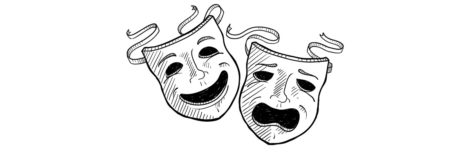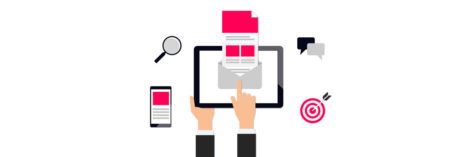Online advertising is tempting. 26% of SMEs use it. However, the monopoly of Google, Meta, and Amazon makes any company that relies on online advertising to find its customers run a considerable risk: dependency. Deprived of TV or radio exposure, SMEs find an accessible media field on the Internet. This article presents the ideal mix for customer acquisition and 3 working axes to reduce your advertising dependencies and increase your profits.
The Figures of Disproportionality: Google, Meta, Amazon
- $209.5 billion: Google’s advertising revenues in 2021, up 49% from 2020
- $114 billion: Meta’s advertising revenues in 2021, up 36.5% from 2020 and 65% from 2019
- 31 bn: Amazon’s advertising revenue in 2021, up 32% from 2020
- 13%: the share of Google’s advertising revenue generated by YouTube ($28.8 billion)
- 70%: the share of online advertising captured by the Big 3
- the share of advertising revenues in the turnover:
- 6% for Amazon
- 81% for Google
- 97% for Meta
Addiction to online advertising: a dangerous evil
Finding customers through online advertising is a reflex for many companies, especially those just starting. How, indeed, to get known when you start? In 2018, 26% of companies were advertising online. In the United States, SMEs’ average monthly amount of online advertising investment is $9,000 to $10,000.
In addition, 92% of Internet searches are done through Google. So, there is no point in hoping to get anything but crumbs from Bing or other alternative search engines.
Online advertising is a trap for 3 reasons:
- It creates a dependency relationship with Google, Facebook, and others. You will be at the mercy of price increases and will have no choice but to comply with them
- the online advertising costs are a direct drain on your bottom line. Everything you pay to GAFA in advertising is money you won’t find at the bottom of your income statement at the end of the year
- by putting your finger in the advertising pie, you don’t develop any in-house know-how. Buying online advertising is an easy way to bring in traffic, but it doesn’t add value to your company in the long term.
We advise you on your acquisition strategy
Online advertising: never more than 1/3 of your sales
Online advertising should be seen as a fraction of your marketing mix. Under no circumstances should you find more than 1/3 of your customers through this channel. The ideal would be to eliminate online advertising from your customer acquisition sources.
Eliminating outbound marketing is a challenge for many companies. That’s why the ideal mix looks like this:
- 25% of customers via advertising (outbound marketing)
- 25% via organic SEO (inbound marketing)
- 25% via word of mouth
- 25% via customer loyalty
The more you reduce advertising, the more profitable you will be. So only use advertising to give a boost:
- when you need growth
- when you have an unused production capacity and need to “fill in the gaps
Contact us to develop your inbound marketing
How to escape the pressure of the advertising giants?
To reduce your dependence on online advertising, we believe there are 3 essential work areas.
Capitalize on customer satisfaction and loyalty
The number one source of revenue should be customer retention. Often quoted, research published in the Harvard Business Review shows that profits can increase by 95% when the loyalty rate increases by 5 points. This may sound like a lot, but it is easily explained by the savings on customer acquisition costs (the same ones that eat away at your bottom line).
Doing everything possible to satisfy your customers ensures that they will remember you positively when they make a new purchase. It also means encouraging positive word-of-mouth (a satisfied customer talks about you to an average of 9 prospects).

Develop your notoriety
In B2B, LinkedIn is a must. Notoriety is essential to find new customers. Position yourself on LinkedIn by publishing regularly. To increase your chances of being visible, capitalize on the 3 factors on which 55% of virality depends: network size, post length, and the number of emojis.
Also, establish informal contacts with potential prospects. Make yourself known by offering something to the prospects you are interested in: a white paper, an interview for a podcast, or videocast, … there are many possibilities to build relationships at little cost by bypassing the classic prospecting techniques.

Develop your organic traffic (inbound marketing)
The last axis of work is inbound marketing. In inbound marketing, the customers naturally come to you with their needs already qualified. This conversion channel is essential in B2B, where acquisition costs are high.
To implement an inbound marketing strategy, you need to do SEO research and publish content. Such a strategy takes at least 12 months to produce its first effects. It is, therefore, necessary to launch it when you do not need it so that it will pay off when the situation is more complicated. In the current period of uncertainty, it seems to us particularly relevant to avoid the inflation of advertising costs.
From the perspective of good referencing, make sure you also keep your google business page up to date. Customer reviews are essential. We cannot recommend enough that you encourage your customers to leave a review. In B2B, it is rarely a reflex, and an empty Google business page is not a guarantee of reassurance for a prospect.
Posted in Strategy.




